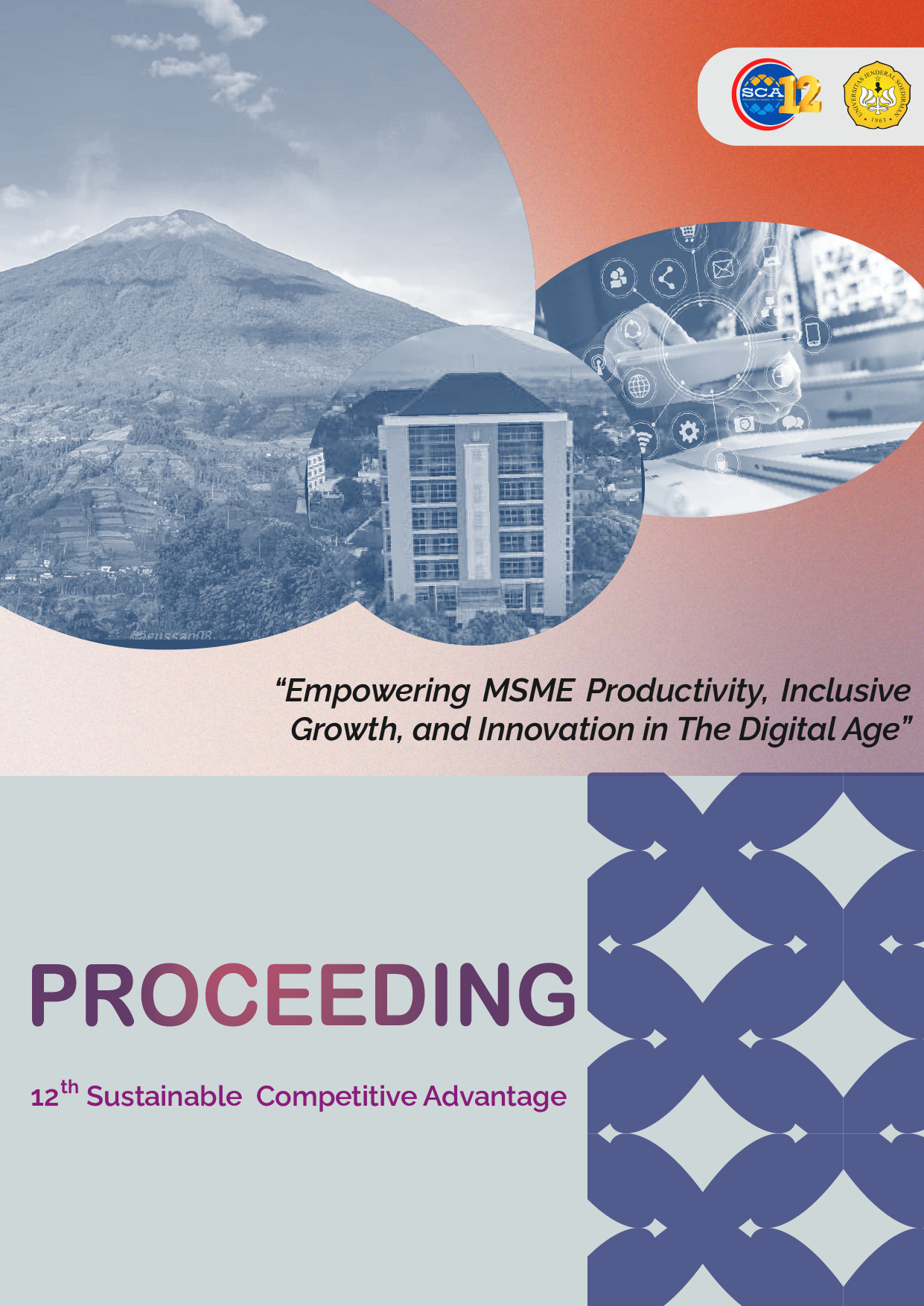Image Of Mas Kembang Tourism Park In Tourism Marketing PerspectiveIn Banyumas District
Abstract
Taman Mas Kemambang has potential that needs to be developed. Therefore, a development strategy is needed so that the image of Taman Mas Kemambang can continue to be built and can develop and increase the interest of tourists to visit again. The research method used is a qualitative research method. Data collection is done by interview, observation, and documentation. The sampling technique used purposive sampling. The validity of the data used is the data triangulation method. The data analysis technique used is interactive analysis technique (data reduction, data presentation, and conclusion drawing). The instruments used are the opinions of tourist visitors, Micro, Small and Medium Enterprises, hotels, restaurants around tourism, and public opinion.
Seeing the market potential in Mas Kemambang Floating Park, it has a great opportunity to be developed into a millennial tourist location that suits market needs. From the results of the research, it is known that the tourism marketing strategy carried out by the BanyumasDinporabudpar is to innovate the development of the diversity of tourist facilities including renovating existing facilities and adding a number of new rides. From the results of the study, it is known that the impact of developing tourist vehicles on the image or brand image in the eyes of the community can continue to be well developed, continue to grow and increase tourist interest to visit again.
Keywords: Marketing Strategy, Tourism Object Development, Taman Mas Kemambang
References
Artuğer, S., et al.(2013). The Effect of Destination Image on Destination Loyalty: Application in Alanya. European Journal of Business and Management, 5 (13) : 124-136.
Chen, Ching Fuand D. Tsa. (2007). “How Destination Image and Evaluative Factors Affect Behavioral Intentions?” Tourism Management, 28 (4):1115-1122.
Coban, S. 2012. “The Effects of The Image of Destination on Tourist Satisfaction and Loyalty:The Case of Cappadocia”. European Journal of Social Sciences, 29 (2) : 222-232.
Cyasmoro, Verry . (2020). “Analysis of the Effect of Promotion, Brand Awareness, Destination Image on Tourist Visiting Satisfaction at Situ Gintung Park and BSD Ocean Park, South Tangerang City. Journal of Eduturisma, 8th Edition, Volume IV Number 2.
Chi, C. G. Q., & Qu, H. (2008). Examining the Structural Relationships of Destination Image, Tourist Satisfaction and Destination Loyalty: An Integrated Approach. Tourism Management, 29(4).
Dinporabudpar. (2022). “Feasibility Study of Mas Kemambang Floating Park Business”. Purwokerto: DinporabudparBanyumas.
Kasali, Rhenald. (2017). Advertising Management: Concepts and Applications in Indonesia. Jakarta: Gramedia Pustaka Utama.
Kemenparekraf/Baparekraf. (2021). Indonesian Tourism Trends in the Midst of a Pandemic.
Kemenparekraf.go.id.
Kim, Choe and Patric. (2018). “The Effect of Celebrity on Brand Awareness, Perceived Quality, Brand Image, Brand Loyalty, and Destination Attachment to a Literary Festival”. Journal of Destination Marketing & Management (2018)
Komalasari, E.D. (2019). “Analysis of Tourism Sector Development in Increasing Regional Original Income (Pad) from the Islamic Economic Perspective (Study at the Bandar Lampung City Tourism Office)". Research result. Lampung: UIN Raden Intan.
Kotler, P., dan K. L. Keller. (2016). Marketing Management. Jakarta: Erlangga.
Lobato, L.H., et.al. (2006), “Tourism Destination Image, Satisfaction and Loyalty: A Study in
Ixtapa-Zihuatanejo, Mexico”, Tourism Geographies, 8(4), pp.343–358.
Morissan, M. A. (2010). Advertising: Integrated Marketing Communications. Jakarta: Prenada
Media Group.
Muljadi. (2009).Tourism and Travel, Jakarta: Raja Grafindo Persada.
Saraswati, HestiDwi& Subhan Afifi. (2022) “Tourism Marketing Communication Strategy in the
Covid-19 Pandemic Period”. Journal of Coverage, Vol. 12, No. 2.
Sharma, G.D., Thomas, A., & Paul, J. (2021). Reviving tourism industry post-COVID-19: A
Resilience-Based Framework. Tourism Management Perspectives, 37(October 2020).
Sun, X., et al. (2013). “Developing destination loyalty: The Case of Hainan Island”. Annals of Tourism Research, 43 : 547-577.
Tjiptono, Fandy. (2015). Service Marketing. Yogyakarta : Andi Offset.
Widokarti,Joko Rizkie&Donni Juni Priansa. (2019). Contemporary Consumer, Marketing &
Communications. Jakarta: Faithful Library
Zhang, Yi.(2015). “The Impact of Brand Image on Consumer Behavior: A Literature Review”, Open Journal of Business and Management, 2015, 3, 58-62.
Zebua, M. (2016). Regional Tourism Development Inspiration. Yogyakarta: Deepublis.

